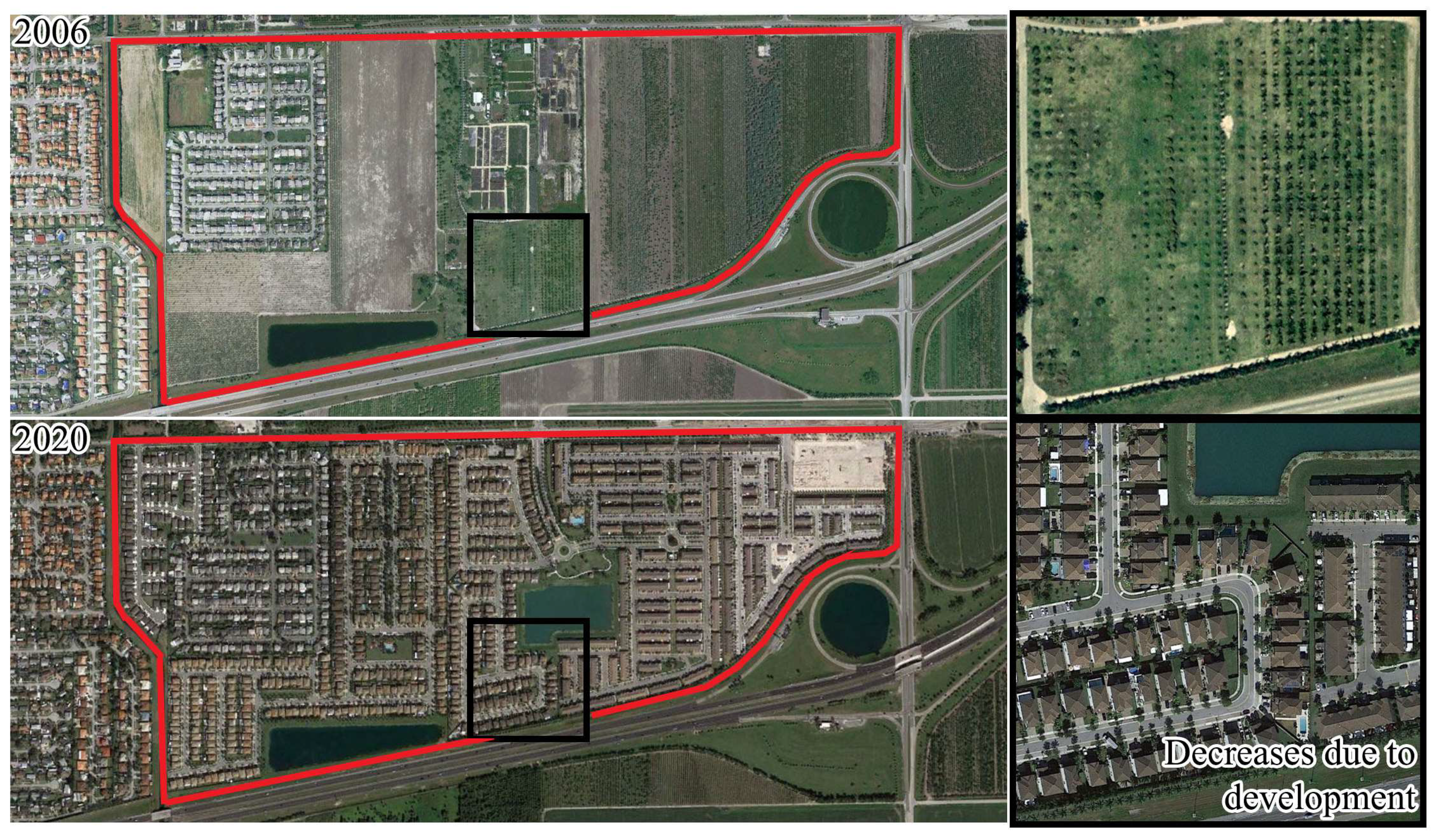
SOUTHWORTH – Greening the Urban Landscape: Assessing the Impact of Tree-Planting Initiatives and Climate Influences on Miami-Dade County’s Greenness
Scott C. Brown, Julius R. Dewald, Joanna L. Lombard, Jane Southworth, Jose Szapocznik
Article first published online: 30 December 2023
DOI: https://doi.org/10.3390/rs16010157
ABSTRACT: In urban settings, trees and greenery play a vital role in environmental well-being and community vitality. This study explores the impact of Miami-Dade County’s tree-planting initiative on urban greenness and considers the influence of climate dynamics. Using Landsat data from 2006 to 2019, we find stable overall greenness, with 5.64% of the Census blocks exhibiting significant changes. Seasonal analysis reveals winter as prominent, with 61.47% of Census blocks showing increased greenness. Temperature and precipitation, especially post-2010, correlate with greenness changes. Despite a reported increase in tree cover from 14% to 20%, our findings show only 5–6% of Census blocks with statistically significant changes, highlighting the complexity of achieving substantial improvements in green canopy coverage. The study raises questions about the efficacy of large-scale tree-planting initiatives in densely urbanized areas when human factors are not well understood. Implications for urban planning stress the importance of preserving green spaces and informed decision-making for enhancing vegetation cover in Miami-Dade County, emphasizing the need to consider local conditions, seasonal variations, policies, and human factors in urban greening efforts.
Read the full publication in Remote Sensing.